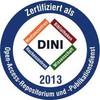Preview |
PDF, English
Download (200MB) | Terms of use |
Abstract
Dynamic fields and forces from ultrasound can enable clinical and contactless acoustic energy transfer applications. This thesis examines the generation and control of ultrasound wavefronts, as well as the use of sound to manipulate microbubbles and cm-scaled objects for assembly.
For the latter, this dissertation investigates the dynamics of insonified microbubbles and their long-range interactions associated with the Bjerknes force. It is shown that arrays of microbubbles can be used to amplify the secondary Bjerknes force to permit the manipulation and positioning of cm-sized objects via bubble arrays. The geometry of the bubble arrays can be used to either achieve continuous rotation of an object on the water surface or its relative positioning with 15 µm accuracy, even though the sound wave has a wavelength of 50 cm.
The second part of the thesis presents two new ways to dynamically form ultrasound fields. Complex ultrasound fields are useful in a number of applications, and they play a particularly important role in ultrasound-based therapy. Traditionally, phased array transducers (PATs) are used to achieve dynamic shaping of ultrasound wavefronts. However, the number of elements is limited as all the transducers require a power amplifier. In addition, only the limited (discrete) phase control can at present be realized. This thesis therefore proposes and experimentally demonstrates a light-based scheme to control the phases in a transducer array. Termed the “Optically Programmable Array of Transducers” (OPATs), an analog circuit consisting of a dual-cascaded network of resistors and capacitors, including photoresistors, is realized that can be used to achieve phase shifts of up to 2π of 121 transducer elements with a single power amplifier. A light intensity pattern from a projector determines the phase of the transducer array. Various dynamic wavefronts including a vortex beam are demonstrated using the OPAT technology, as well as the dynamic updating (up to 100 Hz) of wavefronts.
Finally, this thesis explores material systems that could be used to realize a modulator for ultrasound. Different materials are discussed and a phase change material that shows a solid-to-liquid phase change upon a modest temperature increase is identified as a promising candidate to modulate the speed of an ultrasound wave. A reflective acoustic metasurface and a one-dimensional stack containing the phase change material are experimentally realized. A modulator will require a two-dimensional array of heater elements to drive the spatially-controlled phase change, and this thesis therefore also describes the fabrication of a microheater array for this purpose. Its design and operation are characterized. In summary, this thesis describes several novel developments in physical acoustics that are expected to find application in systems and devices that use ultrasound for manipulation, or that require the control of ultrasound wavefronts. The designs presented in the thesis show promise, as they achieve relatively large forces and high precision for manipulation, and as they can be used to achieve complex ultrasound fields with affordable, flexible architectures. The thesis paves the way for a first realization of a robust, large-scale ultrasound modulator.
| Document type: | Dissertation |
|---|---|
| Supervisor: | Fischer, Prof. Dr. Peer |
| Place of Publication: | Heidelberg |
| Date of thesis defense: | 24 April 2025 |
| Date Deposited: | 09 Oct 2025 10:57 |
| Date: | 2025 |
| Faculties / Institutes: | Fakultät für Ingenieurwissenschaften > Institute for Molecular Systems Engineering and Advanced Materials |
| DDC-classification: | 600 Technology (Applied sciences) |









